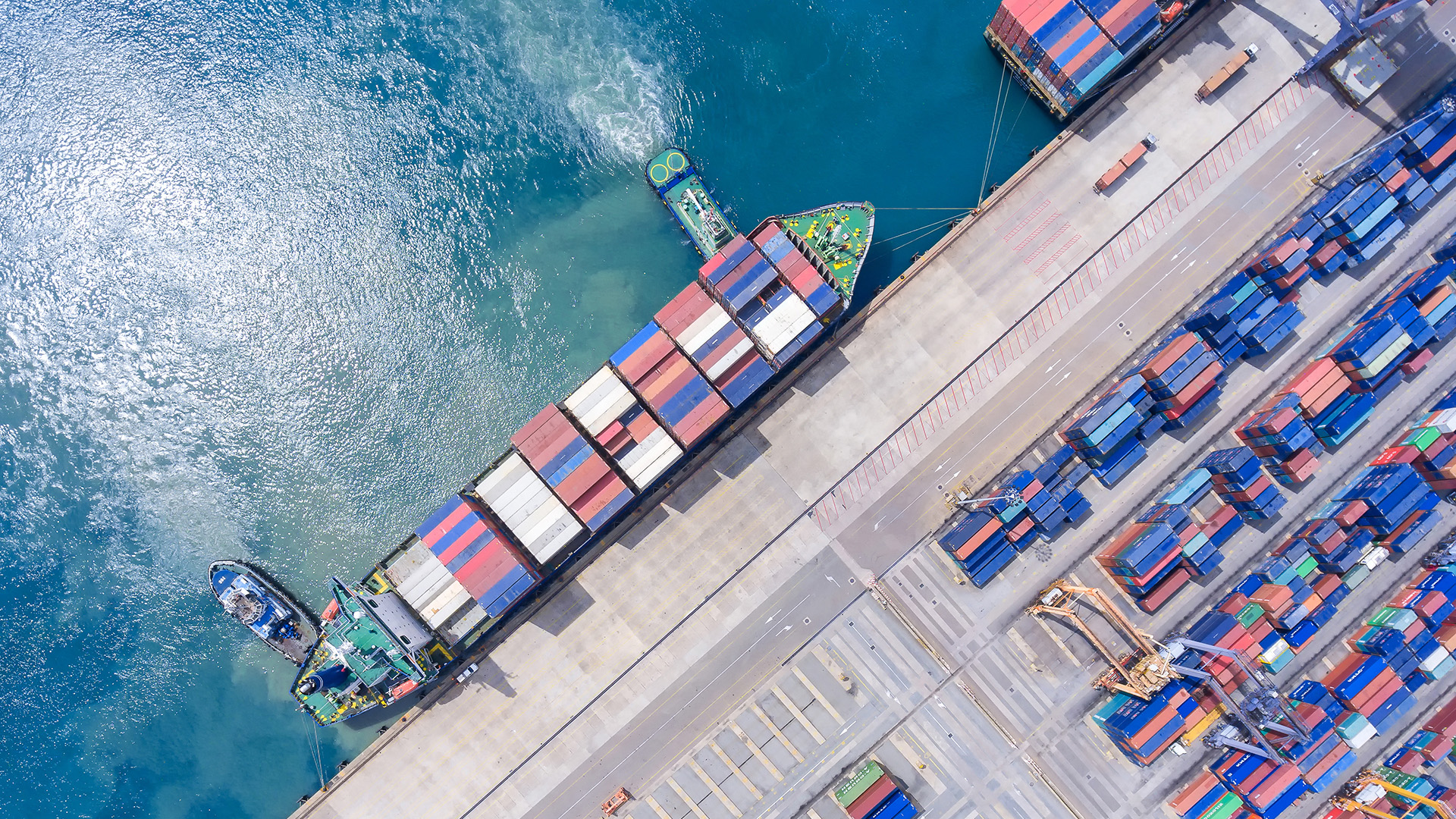
USTR Port Fees: Updates, Clarifications and Proposed Modifications
There is an unprecedented trade war underway between two of the world’s leading economic powerhouses: the USA and People’s Republic of China (PRC). This briefing addresses the principal clarifications and proposed modifications announced on 10 October 2025 by the United States Trade Representative (USTR) to the Section 301 Notice of Action issued on 23 April 2025 (the April Notice).1 An HFW briefing addressing the PRC’s countermeasures of 10 October 2025 can be found here.
On 10 October 2025, the USTR announced further amendments to Section 3012 actions targeting China’s maritime, logistics, and shipbuilding sectors (the October Notice).3 These follow the April Notice and the subsequent Notice of Proposed Modification of Action published on 12 June 2025 (the June Notice).4
Public Comment Process
The October Notice includes determinations that are now final and effective as of its publication in the Federal Register. These determinations reflect the USTR’s review of public comments received in response to the April and June Notices and include fee adjustments, exemptions, and clarifications across the annexes.
In addition, the October Notice introduces further proposed modifications that are subject to a new public comment period. Stakeholders may submit comments via the USTR electronic portal between 10 October and 10 November 2025. A subsequent notice is expected, which may implement, revise, or reject these newly proposed changes.
Further amendments may also follow in response to the PRC’s countermeasures announced on 10 October 2025. For the purposes of this briefing, the October Notice has been divided into “immediate modifications” (which are now in force) and “proposed modifications” (which remain subject to consultation).
Shore cranes and cargo handling equipment
The USTR’s actions were originally structured across four annexes, each governing different categories of vessels or services. The measures are not cumulative: a vessel will be subject to only one fee, determined in the following order:
- Annex IV – LNG transport restrictions;
- Annex III – Vehicle carriers;
- Annex I – Chinese operators/owners; and
- Annex II – Chinese-built vessels.
The June Notice proposed the introduction of Annex V, Tariffs on Ship-to-Shore (STS) Cranes and Cargo Handling Equipment of China. In the latest Notice, Annex V has split this into:
Annex V.A – Tariffs on STS Cranes and Other Cargo Handling Equipment; and
Annex V.B – Proposed Tariffs on Certain Additional Maritime Cargo Handling Equipment of China.
It remains unclear how these new and proposed annexes will be positioned within the existing fee hierarchy, and whether they will also be mutually exclusive or apply cumulatively alongside the original four annexes.
Payment
Vessel operators must self-report and pay accumulated fees in advance of the call. U.S. Customs and Border Protection (CBP), responsible for collecting the fees, has made clear that it is up to the ship operator – not CBP – to determine the amount of fees owed and whether any exemptions apply.5 Payments must be made in advance via the Treasury Department’s Pay.gov portal, with vessel operators required to input vessel net tonnage and, for containerships, container counts. CBP has stated that vessels without proof of payment will be denied loading or discharge operations. The CBP recommends paying at least three days in advance of arrival at the first US port.
The burden of compliance is therefore firmly on the vessel operator, who must interpret the Federal Register notices and USTR guidance to determine their own liability. While the consequences of misinterpretation remain to be seen, challenging U.S. authorities in other maritime areas is generally perceived as difficult and time-consuming.
Some vessel operators have been seeking to restructure to avoid classification as a Chinese vessel operator or owner under Annex I. In this circumstance, it would be wise to update all maritime databases of any ownership structure changes as it is possible that, at least in the first instance, vessels will be assessed for Annex I compliance on such databases.
Annex I – Service fee on Chinese vessel operators and vessel owners
According to the April Notice, this service fee has been set at U.S.$50 per net ton (NT) from 14 October 2025, increasing to U.S.$80/NT on 17 April 2026. The fee is capped at five charges per year, per vessel.
The October Notice introduces the following:
- Immediate Modifications:
Annex I or Annex III service fee payment may be deferred from 14 October 2025 until 10 December 2025 for vessels principally identified as follows:
- Other Liquified Gas Carriers (ICST 130);
- LPG Carriers (ICST 131);
- Other Liquefied Gas Carriers (ICST 139);
- Vehicle Carriers (ICST 325), Ro-Ro Passenger Vessels (ICST 332);
- Other Ro-Ro Cargo Vessels (ICST 333); and
- Ro-Ro Container Vessels (ICST 338).
It is our understanding that vessel operators remain liable for the applicable service fees under Section 301, but payment may be deferred until 10 December 2025, in accordance with the October Notice, to avoid charges based on fee structures that may be modified under the proposed changes to Annexes I and III.
- Proposed Modifications:
Targeted Coverage for Gas Carriers: LPG and liquefied gas carriers ordered before 17 April 2025 and under long-term charter (defined as 20 years or more) before 31 December 2027 may be exempt. “Targeted Coverage” refers to specific exemptions or adjustments to Section 301 service fees that apply to defined vessel types or operational scenarios, as outlined in the Federal Register notices.
Annex II – Service fee on operators of Chinese-built vessels
According to the April Notice, this service fee has been set at U.S.$18/NT or U.S.$120/container from 14 October 2025, rising to U.S.$23/NT or U.S.$153/container on 17 April 2026, with the vessel operator having to pay the higher of the two fees.
The October Notice introduces the following:
- Clarifications:
- Exemptions for vessels arriving empty or in ballast:
The exemption for vessels arriving empty or in ballast applies only when the vessel does not have any cargo or passengers on board.
ii. Voyage distance exemption:
The exemption for vessels entering a U.S. port from a voyage of less than 2,000 nautical miles is assessed based on the actual distance travelled from the furthest foreign port call. Therefore, it would appear that a final interim port call in (for example) Canada or Mexico for a vessel which commenced her laden voyage in China, will not be able to fall within this exception.
iii. Eligibility for the Annex II, Targeted Coverage, paragraph (iii) exemption:
- Fully cellular container vessels (ICST code 310) with a capacity of 4,000 TEU or less;
- Vessels with an individual bulk capacity of 80,000 DWT or less applies to both liquid and dry bulk vessels, including chemical tankers and ore/bulk/oil carriers (this is a helpful clarification as it was previously unclear if tankers/liquid bulk vessels could rely on this exception); and
- Any other vessel subject to Annex II with a capacity of 55,000 DWT or less (as identified on the vessel’s register).
iv. Special purpose vessels:
Chemical tankers (ICST 120) and other special-purpose vessels for the transport of chemical substances in bulk liquid forms may be eligible for targeted coverage.
- Proposed Modifications:
Targeted coverage for “Lakers” vessels (Great Lakes trade) is subject to proposed amendments. If implemented, vessels principally identified as “Lakers” on CBP Form 1300 will not be exempt under targeted coverage provisions (ii), (iii), and (iv) unless loading/discharging cargo destined for or from outside the U.S., Canada, or Mexico.
Annex III – Service fee on operators of foreign-built vehicle carriers
The fee basis introduced in the April Notice – originally calculated using Car Equivalent Units (CEU) – has been revised in the October Notice to a net tonnage model, with fees set at U.S.$46/NT, effective 14 October 2025. Charges are now capped at five per calendar year, per vessel.
The October Notice also introduces the following:
- Clarifications:
Vehicle Carriers: “Vehicle carrier” includes vessels designed for wheeled or tracked cargo that can load itself onboard (ICST codes 325, 332, 333, 338).
- Immediate Modifications:
Annex III service fee payment may be deferred from 14 October 2025 until 10 December 2025 for vessels identified as:
- Vehicle Carriers (ICST 325);
- Ro-Ro Passenger Vessels (ICST 332);
- Other Ro-Ro Cargo Vessels (ICST 333); and
- Ro-Ro Container Vessels (ICST 338).
Exemptions: U.S.-owned or U.S.-flagged vessels enrolled in the Maritime Security Program, and U.S. Government vessels, are exempt from these fees until at least 18 April 2029.
It is our understanding that vessel operators remain liable for the applicable service fees under Section 301, but payment may be deferred until 10 December 2025, in accordance with the October Notice, to avoid charges based on fee structures that may be modified under the proposed changes to Annexes I and III.
- Proposed Modifications:
A new targeted coverage exemption is proposed for U.S.-flagged vessels up to 10,000 DWT, effective as of 14 October 2025 until 18 April 2029, unless renewed.
Annex IV – LNG export restrictions
In the October Notice, the USTR has eliminated the April Notice provision allowing suspension of LNG export licenses for non-compliance with vessel requirements (applies retroactively to 17 April 2025). The phased requirements for LNG exports remain, but without the threat of immediate license suspension.
Annex V.A – Tariffs on STS Cranes and Other Cargo Handling Equipment
The proposed Annex V introduced in the April Notice has been split and amended in the October Notice and introduces the following:
- Modifications effective as of 9 November 2025:
STS Cranes: 100% tariff applies to STS cranes of Chinese origin or with Chinese components. However, cranes that were contracted before 17 April 2025 and delivered by 18 April 2027 are exempt. To qualify, importers must ensure they have the proper documentation and compliance with attestation requirements.
Intermodal Chassis and Parts: 100% tariffs on intermodal chassis and certain parts from China.
- Proposed Modifications:
Further Tariffs: Up to 150% tariffs are proposed on additional cargo handling equipment, including rubber tire gantry cranes, rail mounted gantry cranes, automatic stacking cranes, reachstackers, straddle carriers, terminal tractors, top handlers / loaders, and related components.
What is missing?
Some of the above clarifications are helpful, but there remains great uncertainty as to how the April Notice is to be interpreted. Key terms such as “citizen”, “ownership”, and “control” are not statutorily defined or clarified, leaving room for broad interpretation by U.S. authorities. This ambiguity could expose vessel operators to liability even where only minority stakes (possibly below the expressly referenced 25%), strategic influence, or operational oversight exist. It is also unclear how dual nationals are to be treated, particularly in cases involving directors or shareholders who are Hong Kong or Macau nationals, where dual citizenship is more common.
Given that there have now been two updates, it must be assumed that USTR does not want to clarify these issues at this stage, possibly to keep their enforcement options open.
Charterparty considerations
There remains uncertainty as to how USTR fees will be dealt with under time and voyage charterparties subject to English law. Are they a port fee or tax? Does the implied indemnity bite? There may be no way of avoiding discussions on these issues for existing long-term charters. For new charters, an express “trade wars” clause would be advisable.
Contact us
HFW are one of the few global law firms with offices spanning the U.S., PRC and other key maritime trading hubs and are therefore in a unique position to advise on the implications of the ongoing trade wars.
For further insights, visit our website to read:
- How USTR measures affect the global shipping market, April 2025
- Tariffs 101, April 2025
- Sea freight – weathering the storm of uncertainty, June 2025
- US tariffs, sanctions and Commodities, July 2025
- US tariffs, sanctions and sale contracts, September 2025
- China reacts to USTR Section 301 port fees with “special” port fees on U.S. ships, October 2025
Footnotes:
- 90 FR 17114 – Federal Register :: Notice of Action and Proposed Action in Section 301 Investigation of China’s Targeting the Maritime, Logistics, and Shipbuilding Sectors for Dominance, Request for Comments
- S.301 Trade Act 1974
- https://ustr.gov/about/policy-offices/press-office/press-releases/2025/october/ustr-modifies-certain-aspects-section-301-ships-action-and-proposes-further-modifications-action
- 90 FR 24856 – Federal Register: Notice of Proposed Modification of Action in Section 301 Investigation of China’s Targeting the Maritime, Logistics, and Shipbuilding Sectors for Dominance
- CSMS # 66427144 – Section 301 Vessel Fees
Thiseas Efthymiou, Trainee Solicitor, co-authored this briefing.









